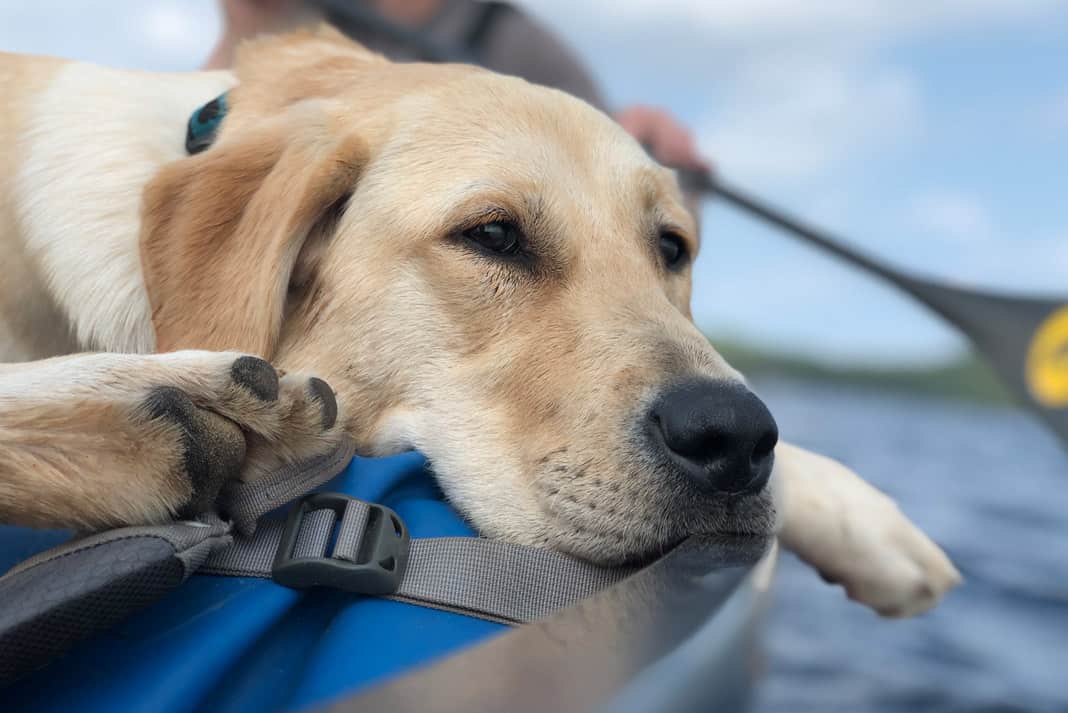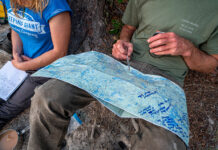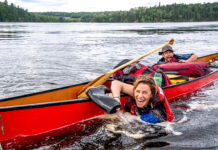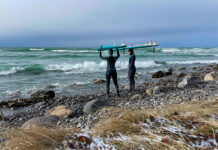Of the many embarrassing stories my grandma likes to tell, her favorite is of the years I sometimes liked to pretend I was a dog. Around the age of 4, there are multiple incidents of barking at strangers in grocery stores, eating sandwiches only if they were cut into the shape of Milk Bones, and biting the odd ankle or two. In this guise I would not have made a good canoe-tripping companion, but taking an actual dog on a canoe trip is a much more enjoyable experience.
The search for a paddling pooch
Fortunately, I grew out of my dog impersonation phase before I started marking my territory, but throughout childhood I retained an astoundingly single-minded fixation on my four-legged friends. At age 8, I was volunteering in shelters, handling the family’s neurotic shepherd rescue at obedience classes, and reading 400-page academic tomes on canine behavior. But as an adult I never had a dog of my own.
A change of heart
For many years as an adult, I dismissed dog ownership as too much responsibility. I was often on the road and I couldn’t fathom bringing a misbehaving mutt along on river trips and long-distance hikes. Last year, I found the perfect trial run. A long-term—but still temporary—gig as a puppy raiser for a future service dog.
Volunteers foster these puppies with a purpose for a year, beginning when they’re tiny seven-week-olds. Over the next 12 months, we help prepare them for professional training with basic obedience and socialization, ensuring the puppy is comfortable in environments it might encounter as a working dog. Think public transit, escalators, busy malls, classroom lectures and sporting events. And maybe, I thought, I should take this aspiring service dog on a canoe trip (or a dozen) for good measure.

The best canoe tripping partner
I needn’t have worried—Aspen was a perfect tripping companion. She was joyful regardless of the hour or weather, offered infectious enthusiasm for every portage, was agreeable on menu and mileage, and she never complained about the bugs. True, she didn’t help much with the paddling, but she was sunshine dozing in the bow of every trip.
For her, the wilderness must be intoxicating. With 300 million scent receptors, her sense of smell is 10,000 times better than mine. “If you make the analogy to vision, what you and I can see at a third of a mile, a dog could see more than 3,000 miles away and still see as well,” says the Institute for Sensory Research’s James Walker in a NOVA documentary. I can’t even imagine the complexity of the smells she smells. Away from the hum of city life, a dog can even hear an ant crawling out of its hill. I’ll never complain about the hungry drone of mosquitos outside my tent again.
These superhero senses were useful for detecting predators and prey. When dogs came to the fire 28,000 years ago, evolution researchers believe it was a transactional relationship—food and protection exchanged on both sides. What the average dog offers in modern society is much more intangible. Unconditional love, many say. Companionship. For some, a service dog is a lifeline.
Why these four-legged companions become family
Thirty-six percent of American households own a dog, each spending an average of $1,641 a year per dog, according to the American Pet Products Association. Increasingly, dogs are just part of the family—or surrogate children for 30-somethings with commitment issues. A survey by Poochperks.com found 38 percent of dog owners claim to love their dogs more than their spouses. A study from Northeastern University in Boston shows dogs in distress elicit the same level of sympathy as infants in distress.
Some might dismiss all this puppy love as anthropomorphizing, but research published in science journal Nature found feel-good hormone oxytocin spikes in both human and canine brains when a dog gazes at its owner. The same spike occurs when a human infant gazes at its parents.
It’s a dog’s life for canoe-tripping canines
Of the many benefits dogs offer their humans—reduced stress and loneliness, improved cardiovascular fitness and more time outside—perhaps their greatest gift is showing us how to live in the moment. I’m often guilty of immersing my thoughts in the future, focused on deadlines and always the next adventure.
Stretched out in the sun in the canoe, I know all Aspen is doing is experiencing the sense of warmth spanning her body. This dog on a canoe trip could teach a lesson to many humans. If the art of life is to live in the present, she’s got it figured out.
Maybe my 4-year-old self was onto something after all.
This article was first published in Issue 57 of Paddling Magazine. Subscribe to Paddling Magazine’s print and digital editions, or browse the archives.
At 14 months old, Aspen was recalled into training for the Seizure Response program at Dog Guides Canada. At the time of printing, Paddling Magazine editor Kaydi Pyette had just picked up eight-week-old Wendy, her second puppy with a purpose.
Love is a four-legged word. Aspen on Big Trout Lake during a weeklong trip in Algonquin Provincial Park. | Feature photo: Kaydi Pyette









We raise guide dog puppies for The Seeing Eye. They are healthy, smart, beautiful and incredibly sweet-tempered. Sometimes it’s very hard to give them back. That’s why we’re raising our 17th dog… 🙂
I am a mother and this helped me!
The author stated, “or surrogate children for 30-somethings with commitment issues”
Get real! Many people choose to remain child-free because of environmental reasons. Seven billion people on this planet is plenty. At almost 50 years of marriage, I doubt my spouse would think I have commitment issues. Remaining dog-free means my canoe occupants done bark at, harass or otherwise annoy wildlife. There are very good reasons why National Wildlife Refuges don’t allow canines.
My golden retriever would jump into the canoe any chance she got. If she stood and shifted her 80 pounds from one gunnel to the other. I would nudge her with a paddle. Then she’d lie down with her head looking over one side.
25 years ago I was the leader of my son’s Scout troop on a 5 day trip in the BWCAW. We went Lake One to Insula, my favorite lake. After 4 days we packed up to head out. I always do a final sweep of the campsite to look for forgotten stuff or garbage. Under the table there was our golden retriever looking worried.
She happily jumped the canoe.
On our annual guys’ September BWCAW trip we had an evening with lots of rain. No problem. My soggy golden just snuggled right down at the foot of my buddy’s down bag. Hmm. He never shared a tent with me again. Due to the dog or to my snoring?
thanks for your more then welcome news keep up the good work